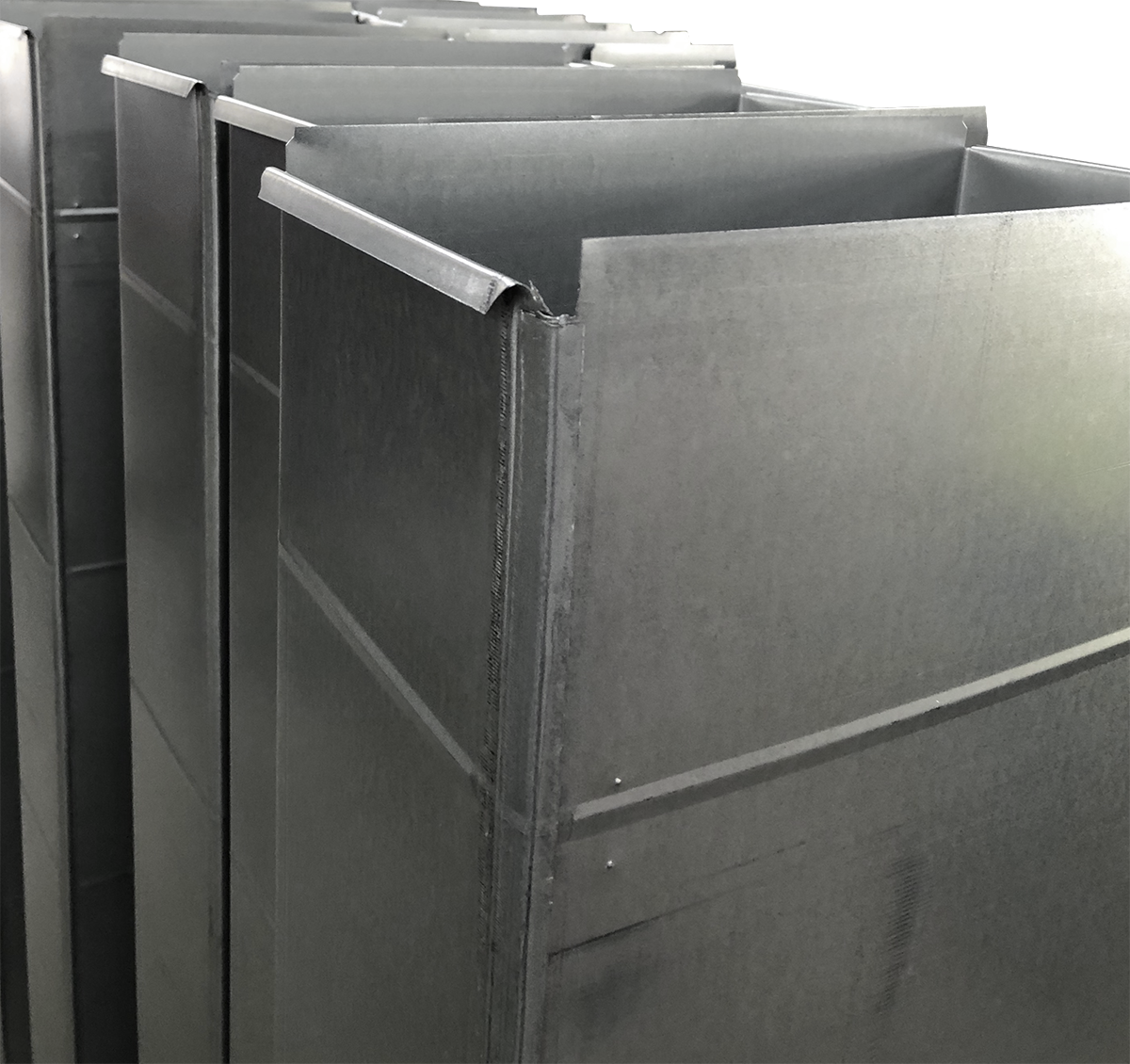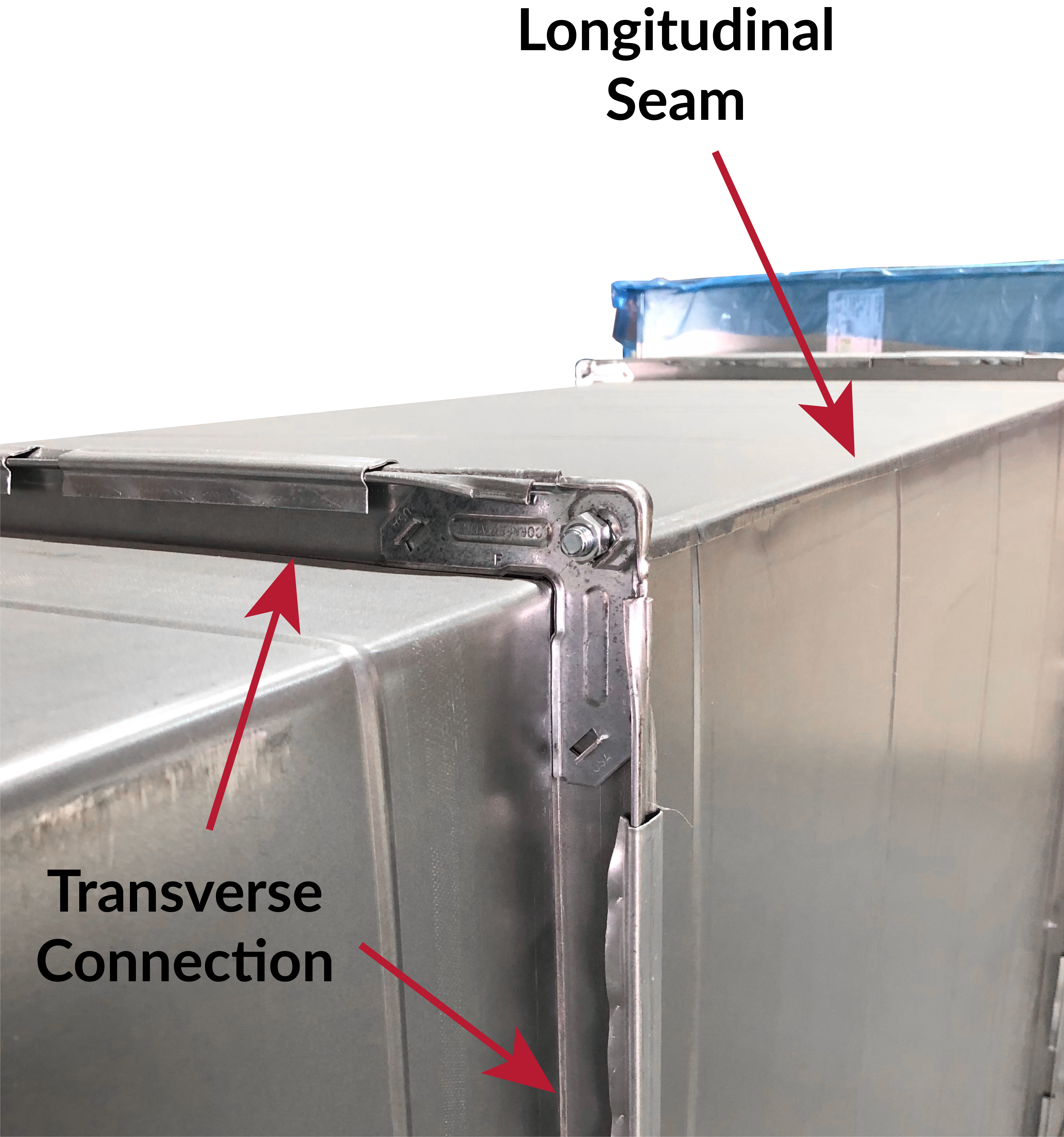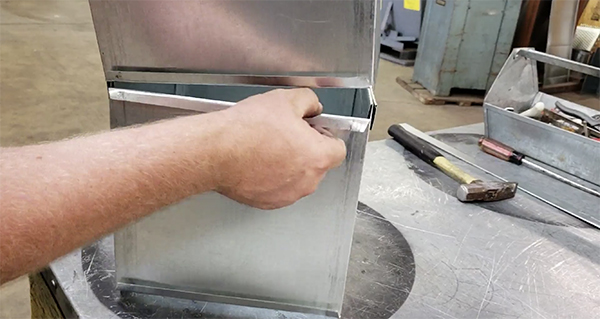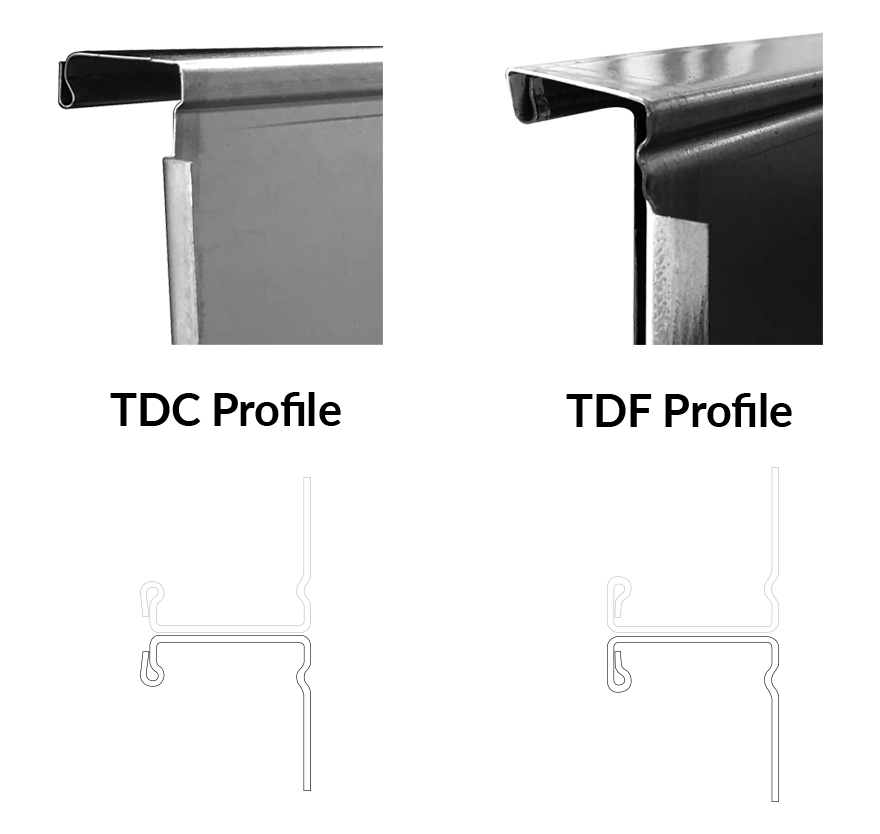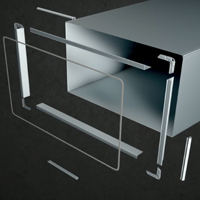Rectangular Duct Basics
Rectangular Duct is the most common type of duct in commercial projects.
Round duct, namely spiral pipe, is gaining ground but has limitations in areas of strength, reinforcement, both thermal and acoustic insulation because a lack of accompanying materials.
When it comes to Rectangular Duct there is a transverse (end to end) connection and a longitudinal connection, either 1 or 2, depending on whether the duct is fabricated in L sections (2 piece duct) or as full wrap duct (1 piece duct).
If you’re having difficulty understanding the difference between the Transverse Seam and the Longitudinal Seam, here’s a tip. Picture the duct placed on the floor with the opening facing the ceiling, the longitudinal side would be the height and the transverse connection would be the width. Another way to remember this is by thinking about the longitudinal seam as the one running along the same direction as the air flows.
When it comes to the transverse connection, there are three options:
1. Flat S and Drive Cleat, Standing S Lock
Blog: Slip & Drive Duct Installation
Most commonly used transverse connection. Lowest front-end cost but usually requires more labor in the field.
Conklin sells the Flagler Quadformer and Vicon V-8 machines that Rollform the Flat S Cleat and the Drive Cleat.
2. TDC/F Built on Connection
The only profile that is rollformed onto the duct. Typically easier during field installation.
Machines from Vicon, Lockformer and Flagler that roll form the F or C profile onto the duct are very common in larger fab shops as these machines allow for the connection to be part of the duct itself and not separate components.
3. Slip-On Flange: Ductmate 4 Bolt Flange and accessories
Blog: How the Ductmate Flange becomes a system…
Slide on flange used in medium and high pressure jobs and when duct is likely to be modified on the jobsite.
Ductmate 35 Flange and the connecting accessories that go along with it provide for the strongest connection (and best looking too).

